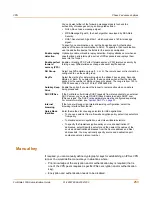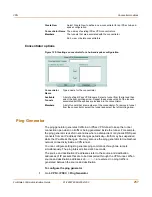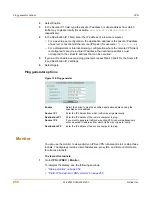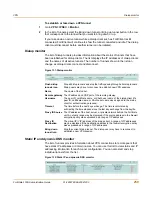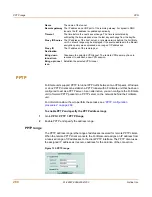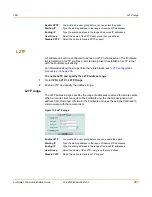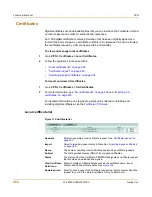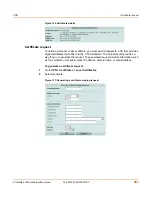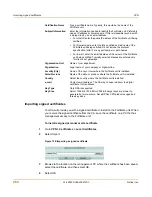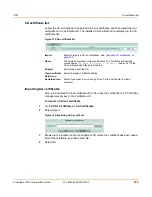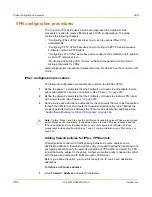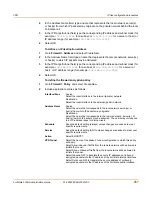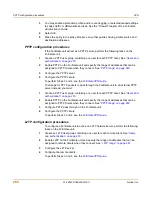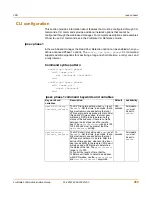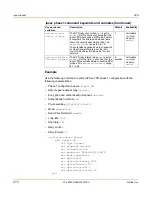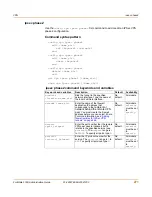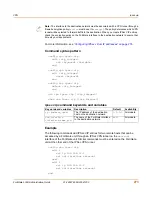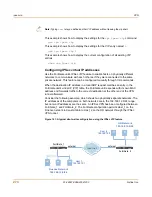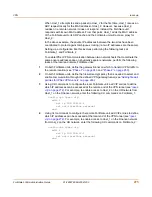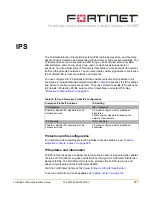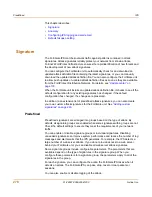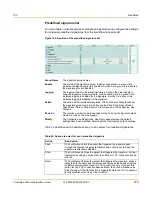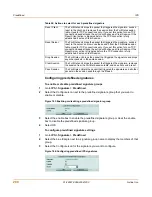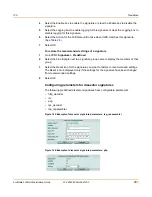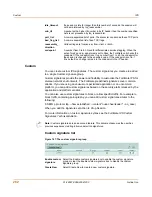
VPN
IPSec configuration procedures
FortiGate-100A Administration Guide
01-28007-0068-20041203
267
2
In the Address Name field, type a name that represents the local network, server(s),
or host(s) from which IP packets may originate on the private network behind the local
FortiGate unit.
3
In the IP Range/Subnet field, type the corresponding IP address and subnet mask (for
example,
172.16.5.0/24
for a subnet, or
172.16.5.1/32
for a server or host) or
IP address range (for example,
192.168.10.[80-100]
).
4
Select OK.
To define an IP destination address
1
Go to
Firewall > Address
and select Create New.
2
In the Address Name field, type a name that represents the remote network, server(s),
or host(s) to which IP packets may be delivered.
3
In the IP Range/Subnet field, type the corresponding IP address and subnet mask (for
example,
192.168.20.0/24
for a subnet, or
192.168.20.2/32
for a server or
host), or IP address range (for example,
192.168.20.[10-25]
).
4
Select OK.
To define the firewall encryption policy
1
Go to
Firewall > Policy
and select Create New.
2
Include appropriate entries as follows:
Interface/Zone
Source
Select the local interface to the internal (private) network.
Destination
Select the local interface to the external (public) network.
Address Name
Source
Select the name that corresponds to the local network, server(s), or
host(s) from which IP packets may originate.
Destination
Select the name that corresponds to the remote network, server(s), or
host(s) to which IP packets may be delivered. The name may correspond
to a VIP-address range for dialup clients.
Schedule
Keep the default setting (always) unless changes are needed to meet
specific requirements.
Service
Keep the default setting (ANY) unless changes are needed to meet your
specific requirements.
Action
Select ENCRYPT.
VPN Tunnel
Select the name of the phase 2 tunnel configuration to which this policy
will apply.
Select Allow inbound if traffic from the remote network will be allowed to
initiate the tunnel.
Select Allow outbound if traffic from the local network will be allowed to
initiate the tunnel.
Select Inbound NAT to translate the source IP addresses of inbound
decrypted packets into the IP address of the FortiGate internal interface.
Select Outbound NAT to translate the source address of outbound
encrypted packets into the IP address of the FortiGate public interface.
Summary of Contents for FortiGate 100A
Page 12: ...Contents 12 01 28007 0068 20041203 Fortinet Inc ...
Page 24: ...24 01 28007 0068 20041203 Fortinet Inc FortiLog documentation Introduction ...
Page 72: ...72 01 28007 0068 20041203 Fortinet Inc Transparent mode VLAN settings System network ...
Page 80: ...80 01 28007 0068 20041203 Fortinet Inc DHCP IP MAC binding settings System DHCP ...
Page 114: ...114 01 28007 0068 20041203 Fortinet Inc Access profile options System administration ...
Page 232: ...232 01 28007 0068 20041203 Fortinet Inc Profile CLI configuration Firewall ...
Page 244: ...244 01 28007 0068 20041203 Fortinet Inc peergrp Users and authentication ...
Page 276: ...276 01 28007 0068 20041203 Fortinet Inc ipsec vip VPN ...
Page 338: ...338 01 28007 0068 20041203 Fortinet Inc Configuring the banned word list Spam filter ...
Page 356: ...356 01 28007 0068 20041203 Fortinet Inc syslogd setting Log Report ...
Page 374: ...374 01 28007 0068 20041203 Fortinet Inc Index ...

